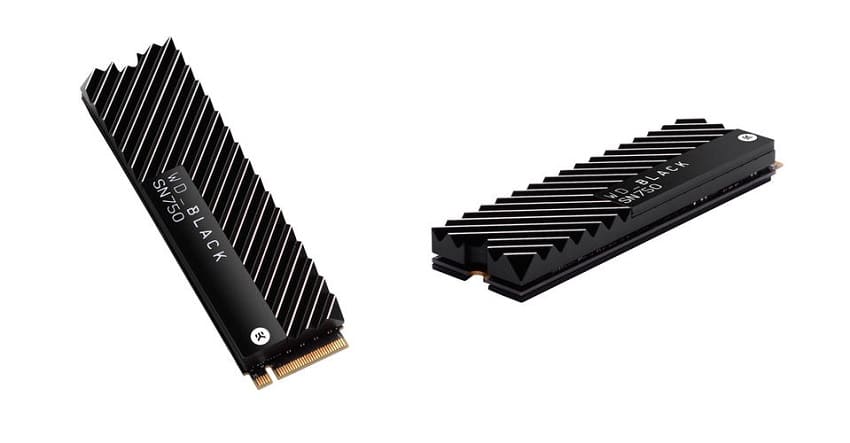
Western Digital has announced the second-generation model of the WD Black SN750 NVMe single-sided M.2 SSD. Marketed specifically towards gamers and enthusiasts, the SN750 features a capacity range of 500GB to 2TB as well as a Gaming Mode option via the SSD dashboard, allowing users to disable low power mode and keep the SSD running at peak levels.
The SN750 also features models equipped with an integrated EKWB-designed heatsink to maintain speed and temperature so it can run for longer periods of sustained read and write performance. This is also particularly important to gamers, as PCs heat up significantly during game play.
WD’s second-generation SSD is outfitted with the company’s in-house 3D NAND technology, firmware and controller, and features a vertically integrated SSD platform. Performance-wise, the SN750 is quoted to deliver sequential reads up to 3,470MB/s (500GB and 1TB model) and sequential writes up to 3,000MB/s (1TB model). Moreover, random reads and writes are expected to hit up to 515,000 IOPS and 560,000 IOPs, respectively, for 1TB model. Though this won’t affect the gameplay directly, speeds like these will certainly lessen the time during loading screens and when launching the game itself.
The WD Black SN750 NVMe SSD is backed by a five-year limited warranty with up to 600TBW endurance for the 1TB model and up to 1200TBW for the 2TB model.
WD Black SN750 NVMe Key Specifications
| Interface |
PCIe Gen3 8 Gb/s, up to 4 lanes |
| Form Factor | M.2 2280 |
| Performance | |
| Sequential Read/Write: |
2TB
|
|
1TB
|
|
|
|
500GB
|
|
250GB
|
|
Pricing and Availability
The WD Black SN750 NVMe SSD will range in price from $79.99 (250GB) up to $499.99 (2TB). Models and capacities will be released on different dates, but expect them to be available sometime in Spring 2019.
Sign up for the StorageReview newsletter

